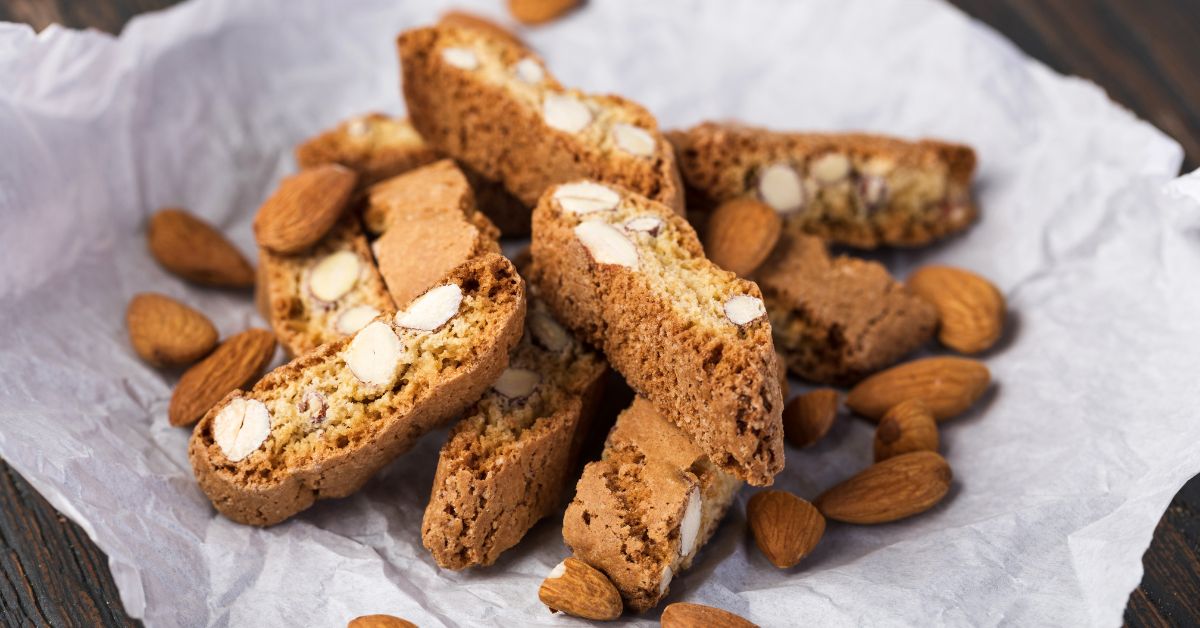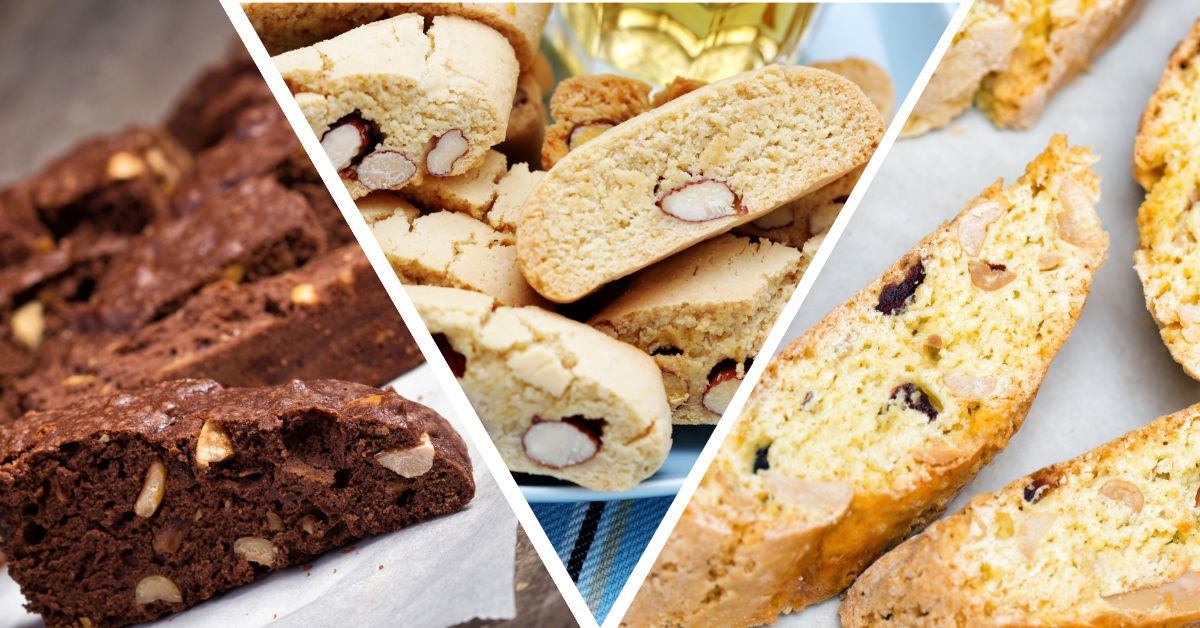What Do Biscotti Taste Like? How to Soften Them?

Dry and crumbly, biscotti have managed to make their way worldwide, finding a home in many pantries and shop shelves. Durable and versatile, biscotti have become the default snack for many because its delicious flavor allows for many combinations with other snacks and drinks. So what do biscotti taste like?
Biscotti are sweet-tasting cookies that are meant to dunk. The primary flavors are vanilla, anise, and almond, but the taste is largely influenced by what you dunk them in.
What biscotti taste like is a general question, as there isn’t one single biscotti taste. For example, when we ask about the taste of bacon, we know what it tastes like, but the biscotti are a bit trickier, as they can taste differently. Still, the biscotti have a signature flavor that makes them recognizable, but since they are very flavor-absorbent, their basic flavor may be a little colored. Therefore, in the following paragraphs, I will explain the taste of the biscotti and give you some tips on making the most of them.
What Are Biscotti Supposed to Taste Like?
The biscotti taste isn’t just a taste but a combination of their consistency, texture, and included flavors. Biscotti are cookies made of flour, sugar, butter, and eggs, so their most basic flavor is mildly sweet, with a whiff of butteriness. The biscotti taste is best described as a sweet, crispy, and crumbly cookie.
The sugar content of the biscotti is low, so they aren’t expressively sweet, but their sweetness is more understated and discrete, making these delicious snacks very easy to pair. Due to their almost neutral flavor, the biscotti are excellent to pair; they are intended to dunk.
The chocolate-coated biscotti are naturally chocolate-flavored. It is very common for the biscotti to be coated in chocolate after baking and then left to cool down so the chocolate stays on them. It is customary to coat only half of the biscotti with chocolate, leaving the other half bear.
In addition to the chocolate-flavored biscotti, there are vanilla-flavored ones. They contain vanilla extract in the dough, perfectly mixing with the discrete sweetness and butteriness of the biscotti.
Almond biscotti contain almond flour or crushed almonds in the dough. It is very common for these three flavors, i.e., chocolate, almonds, and flour, to be combined in a single biscotti, resulting in an amazing symphony of flavors.
Anise biscotti are also very delicious and the most recognizable of all. Anise is an herb with a strong flavor and aroma that you cannot mix up with another. The biscotti containing this herb is sweet with somewhat of a menthol flavor mixed up with a brandy aroma, as this herb is used in the making process of the alcoholic beverage called Rakiya (a drink very popular in South and Eastern Europe and the Middle East).
Depending on what you dunk your biscotti in, they can taste like tea, milk, coffee, cocoa, rum, or wine. The crumbly and crunchy consistency softens after you dink the biscotti in the liquid, transferring the flavor through the entire cookie.
The classic biscotti taste is mildly sugar and buttery, almost neutral yet rich and satisfying. Their ability to successfully meld with other flavors makes these pastries a true delight and a globally known and loved snack.
Are Biscotti Sweet?
Because they contain sugar in the dough, the biscotti are sweet, but not excessively or expressively, but moderately and discretely. Given that biscotti are twice-baked, they may taste sweeter after the first bake, while after the second, they get the taste they are known for.
If you like your biscotti sweeter, you can put more sugar in them, but deviating from the recipe by much will affect the final result. Adding more sugar to the biscotti means that you risk making them stickier and turning them into something that isn’t biscotti.
Therefore, if you like your biscotti to be sweeter than they regularly are, I’d advise you to dip them in chocolate and sprinkle some powdered sugar on them, sweetening them up without ruining them.
How Do You Eat Biscotti?
As I already mentioned, biscotti are very versatile in terms of combining them. You can have them as they are, dip them in chocolate, or dunk them in a liquid. Since they are very hard to bite and have them as they are, dunking them in liquid is the most common way to eat biscotti.
You can have them with coffee, tea, milk, rum, wine, or even in a pudding or ice cream. You can combine your biscotti with milk, chocolate cream, or honey. Another great idea to combine your biscotti with is jam and dried fruits; the jam will penetrate the biscotti, slowly softening them up, making them more chewable.
What Are Some Biscotti Variations?
The most common biscotti variations are vanilla, anise, and almond, but there’s no limitation to the type of flavoring you can use to spice up your biscotti.
The vanilla biscotti contain vanilla extract and go excellent with fruity combinations, such as fruit jam, dried fruits, or fruit wine, and also frothy coffee drinks. The anise biscotti are great with rum, black coffee, or black tee. The anise biscotti have the strongest flavor and aroma and pair excellent with strong-tasting drinks.
The almond biscotti are best paired with herbal teas, chocolate, milk, and coffees containing milk or milk foam.
You can put pumpkin spice in the dough and make pumpkin biscotti or cinnamon for cinnamon biscotti. It is also common to add raisins to the dough and have your biscotti’s crunchiness interjected with the soft raisin texture.

Why Are Biscotti Hard?
Biscotti are so durable because they are baked twice, which is why they are so hard. After the first bake, the biscotti are dry but not as hard as after the second baking. Moreover, before their second baking, the biscotti are cut diagonally, exposing their interior to direct heat, so not only is their crust hard and crumbly, but the inside of the cookies is like that.
Biscotti are Italian snack pastries that came to be globally known because Cristopher Columbus carried them with him on his exploratory voyage. He decided to bring biscotti with him because they are exceptionally durable, so he made sure he had something to nibble on while exploring the world.
How to Soften Biscotti?
Softening biscotti is very simple; just dunk them into liquid, and the job is done. Warm coffee, milk, or tea soften the biscotti most effectively. The biscotti soften more quickly if dunked in a warm liquid, but the cold will do well too.
Cold beverages like rum or wine need more time, but they still work quickly. Honey or syrup can also soften the biscotti, but you will need to let them soak a bit because the honey and syrup are denser and penetrate the biscotti slower.
If you dip the biscotti in pudding or ice cream, they will soften up in no time.
Are Biscotti Kosher?
To say that biscotti are, by default, kosher would not be accurate, but kosher biscotti are made according to kosher standards. For a food to be kosher, it needs to conform to the kosher food standards, which are very detailed, exhaustive, and complex.
